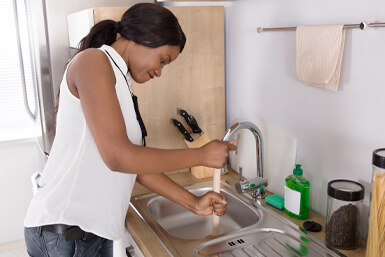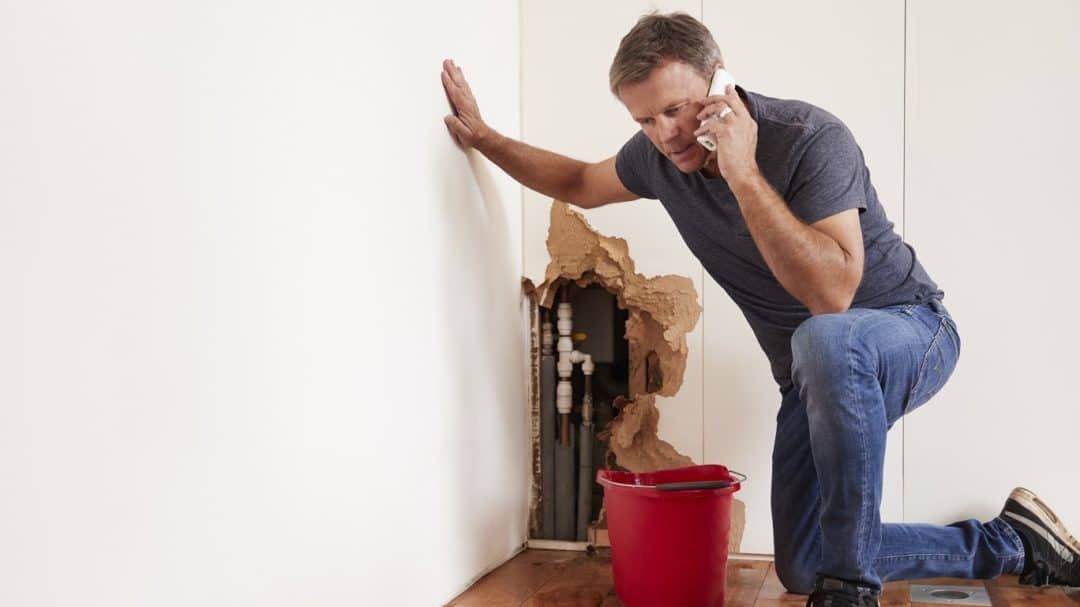When Appliances Go Awry: Typical Concerns That Call for a Plumber's Expertise
When Appliances Go Awry: Typical Concerns That Call for a Plumber's Expertise
Blog Article
Every person maintains their unique opinion when it comes to Why Do My Pipes Make Noises.

To identify noisy plumbing, it is important to identify first whether the unwanted audios take place on the system's inlet side-in various other words, when water is turned on-or on the drain side. Noises on the inlet side have actually varied causes: too much water stress, worn valve and also tap parts, improperly attached pumps or other appliances, inaccurately put pipe bolts, as well as plumbing runs including way too many limited bends or other restrictions. Noises on the drain side generally come from inadequate place or, as with some inlet side sound, a design containing limited bends.
Hissing
Hissing sound that occurs when a tap is opened somewhat generally signals too much water pressure. Consult your local public utility if you presume this trouble; it will be able to inform you the water pressure in your location as well as can install a pressurereducing shutoff on the incoming water pipe if necessary.
Thudding
Thudding sound, frequently accompanied by trembling pipes, when a tap or appliance shutoff is shut off is a problem called water hammer. The sound as well as resonance are triggered by the resounding wave of pressure in the water, which suddenly has no place to go. Occasionally opening a shutoff that discharges water swiftly into a section of piping having a limitation, joint, or tee fitting can create the same condition.
Water hammer can generally be cured by mounting fittings called air chambers or shock absorbers in the plumbing to which the issue shutoffs or faucets are attached. These tools allow the shock wave developed by the halted flow of water to dissipate in the air they have, which (unlike water) is compressible.
Older plumbing systems may have brief upright sections of capped pipeline behind wall surfaces on faucet competes the very same purpose; these can at some point fill with water, decreasing or damaging their effectiveness. The cure is to drain pipes the water supply completely by turning off the main water system valve and opening up all taps. Then open the primary supply shutoff and close the faucets individually, starting with the faucet nearest the valve and also finishing with the one farthest away.
Chattering or Shrieking
Extreme chattering or shrilling that occurs when a shutoff or faucet is switched on, and that typically vanishes when the installation is opened totally, signals loose or defective interior components. The option is to change the valve or faucet with a new one.
Pumps and appliances such as washing makers as well as dishwashing machines can move electric motor sound to pipes if they are improperly connected. Link such products to plumbing with plastic or rubber hoses-never rigid pipe-to isolate them.
Other Inlet Side Noises
Squeaking, squealing, damaging, breaking, and also touching usually are caused by the expansion or contraction of pipes, usually copper ones supplying warm water. The audios take place as the pipelines slide against loose fasteners or strike neighboring residence framework. You can commonly identify the location of the problem if the pipes are exposed; just follow the audio when the pipelines are making sounds. Probably you will find a loose pipeline wall mount or a location where pipes lie so near flooring joists or other framing items that they clatter versus them. Connecting foam pipe insulation around the pipelines at the point of contact need to correct the issue. Be sure bands and also hangers are secure and also supply sufficient support. Where possible, pipe bolts ought to be attached to substantial architectural elements such as structure wall surfaces instead of to mounting; doing so minimizes the transmission of vibrations from plumbing to surface areas that can enhance as well as transfer them. If attaching bolts to framework is inevitable, wrap pipelines with insulation or various other durable material where they speak to bolts, as well as sandwich the ends of brand-new fasteners between rubber washing machines when mounting them.
Fixing plumbing runs that deal with flow-restricting tight or numerous bends is a last resource that must be carried out just after speaking with a knowledgeable plumbing specialist. However, this situation is relatively common in older homes that may not have actually been constructed with indoor plumbing or that have seen a number of remodels, especially by beginners.
Drainpipe Sound
On the drainpipe side of plumbing, the chief objectives are to eliminate surface areas that can be struck by falling or hurrying water as well as to shield pipes to include inescapable sounds.
In brand-new construction, bathtubs, shower stalls, bathrooms, and wallmounted sinks as well as containers should be set on or against resistant underlayments to reduce the transmission of noise via them. Water-saving toilets as well as taps are less noisy than standard models; install them as opposed to older kinds even if codes in your location still permit utilizing older components.
Drains that do not run vertically to the basement or that branch right into straight pipe runs supported at flooring joists or various other mounting existing particularly bothersome sound problems. Such pipes are big sufficient to emit considerable vibration; they likewise lug substantial amounts of water, which makes the circumstance even worse. In brand-new construction, specify cast-iron soil pipes (the big pipelines that drain pipes commodes) if you can afford them. Their massiveness consists of a lot of the sound made by water travelling through them. Also, avoid directing drains in wall surfaces shown to rooms and rooms where people gather. Walls including drainpipes ought to be soundproofed as was explained previously, making use of dual panels of sound-insulating fiber board and also wallboard. Pipelines themselves can be covered with special fiberglass insulation produced the objective; such pipelines have a resistant plastic skin (occasionally having lead). Outcomes are not constantly adequate.
WHY IS MY PLUMBING MAKING SO MUCH NOISE?
This noise indeed sounds like someone is banging a hammer against your pipes! It happens when a faucet is opened, allowed to run for a bit, then quickly shut — causing the rushing water to slam against the shut-off valve.
To remedy this, you’ll need to check and refill your air chamber. Air chambers are filled with — you guessed it — air and help absorb the shock of moving water (that comes to a sudden stop). Over time, these chambers can fill with water, making them less effective.
You’ll want to turn off your home’s water supply, then open ALL faucets (from the bathroom sink to outdoor hose bib) to drain your pipes. Then, turn the water back on and hopefully the noise stops! If you’re still hearing the sound, give us a call to examine further.
Whistles
Whistling sounds can be frustrating, as sometimes the source isn’t easily identified. However, if you can pinpoint which faucet or valve that may be the cause, you’ll likely encounter a worn gasket or washer — an easy fix if you replace the worn parts!Whistling sounds from elsewhere can mean a number of things — from high water pressure to mineral deposits. Your best plan of attack here is to give our plumbing experts a call. We’ll be able to determine where the noise is coming from and what the cause may be, then recommend an effective fix!
Cracks or Ticks
Cracking or ticking typically comes from hot water going through cold, copper pipes. This causes the copper to expand resulting in a cracking or ticking sound. Once the pipes stop expanding, the noise should stop as well.
Pro tip: you may want to lower the temperature of your water heater to see if that helps lessen the sound, or wrapping the pipe in insulation can also help muffle the noise.
Bangs
Bangs typically come from water pressure that’s too high. To test for high water pressure, get a pressure gauge and attach it to your faucet. Water pressure should be no higher than 80 psi (pounds per square inch) and also no lower than 40 psi. If you find a number greater than 80 psi, then you’ve found your problem!
Next step is to give us a call in order to install a pressure regulator. Trust us, you don’t want to wait to resolve this issue. Not only is the sound annoying, but high water pressure can be destructive to your home — including damaging certain appliances, like your washer and dishwasher.
Dripping
You might be accustom to the slow quiet drip your kitchen faucet makes. You might have even tuned out your bathroom sink dripping and drabbing all day long — but it’s time to find its cause.
A slow drip could signify a variety of easy to fix issues, such as a worn out O ring, or loose part. And by ignoring the drip, you could be wasting up to 2,000 gallons of water a year! So start conserving water — get it looked at ASAP.
https://www.pwessig.com/blog/2018/december/why-is-my-plumbing-making-so-much-noise-/

As an avid reader about Why Your Water Pipes Are Noisy and How To Shut Them Up, I thought sharing that article was really helpful. Are you aware of somebody who is occupied with Why Your Water Pipes Are Noisy and How To Shut Them Up? Do not hesitate to promote it. I value reading our article about Why Do My Plumbing Pipes Make A Knocking Noise.
Visit The Following Page Report this page